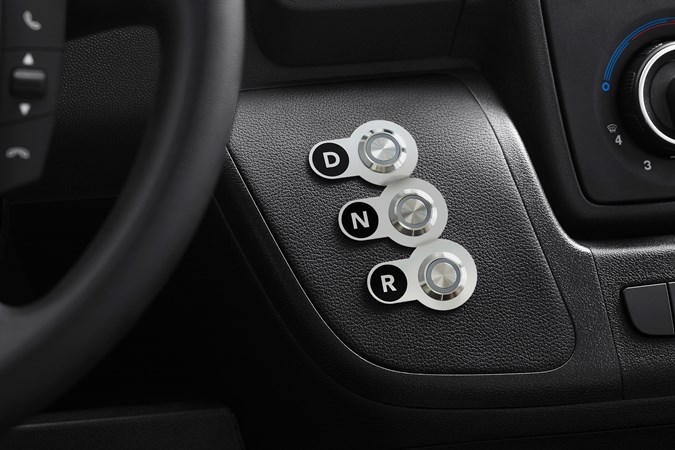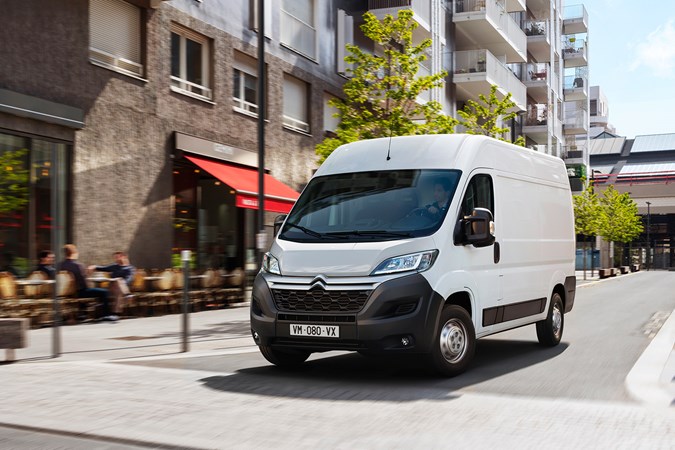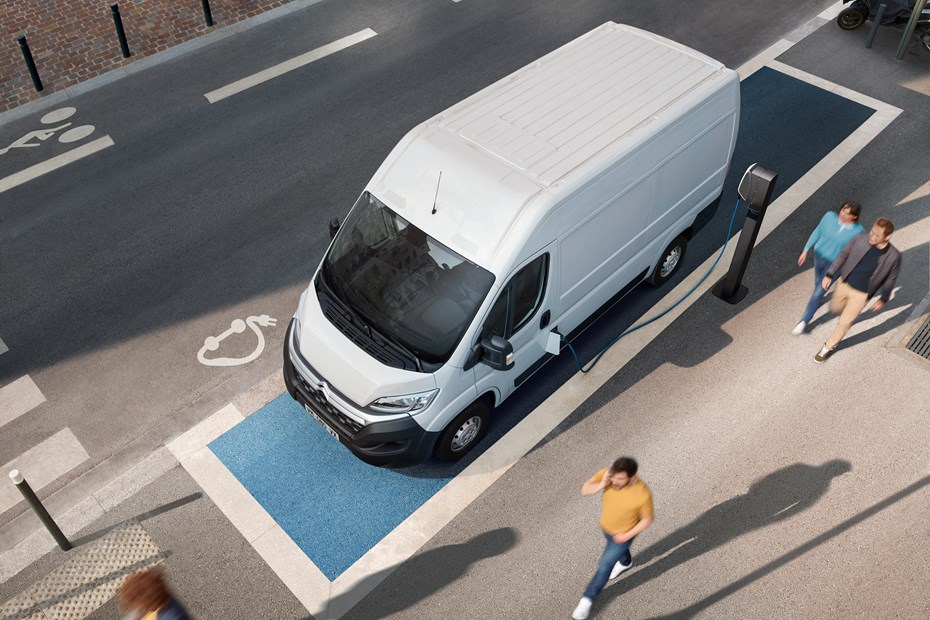The new Citroen e-Relay is available to order and means that Citroen’s large van is now available with a fully electric version.
The good news is that e-Relay pricing starts at a fraction over £50k. The less good news is that driving range and payload are rather limited, and UK buyers have less choice than originally expected.
Maximum payload for panel van models is just 1,150kg, while the entry-level model with the keenest price is only able to drive 73 miles between charges.
Citroen e-Relay technical specs
The e-Relay is converted to electric power on Citroen’s behalf by British electric vehicle converter BEDEO – which means it’s not just a rebadged version of the Fiat E-Ducato (which is built in-house by Fiat).
But the Citroen is technically identical to the Peugeot e-Boxer and the Vauxhall Movano-e, which are also being made by BEDEO.
Replacing the usual 2.2-litre BlueHDi turbodiesel engine in regular Citroen Relay models is a 90kW electric motor – equivalent to 122hp. This matches the power output of the least potent diesel Relay, but is substantially down on torque, providing just 260Nm compared with the diesel’s 310Nm.
Around town, this shouldn’t be too noticeable – electric motors provide all of their available torque from a standstill, so at low speeds the e-Relay should still have plenty of performance. Expect the motor’s initial punchiness to tail off once you get onto a faster road, though – the diesel will likely be a far better companion on the motorway.
Available in 3.5-tonne and 4.0-tonne (3,500kg and 4,000kg) gross vehicle weight versions, the former is limited to 68mph while the latter is limited to 56mph. Both are legal to drive on a regular UK car driving licence in some circumstances, thanks to the exception made for alternative fuel vehicles (diesels are restricted to 3.5 tonnes).

All e-Relay variants are front-wheel drive and use a single-speed transmission, so they drive like an automatic. Instead of using a traditional lever, you select Drive, Neutral or Reverse by pressing buttons on the centre console.
>> The best electric vans you can buy now
Battery options, driving range and charging
There are two lithium ion battery pack options available for the e-Relay: 37kWh or 75kWh.
The smaller 37kWh battery offers a scant 73 miles of driving per charge, while the larger 75kWh battery claims 154 miles of driving range per charge. Early adopters will get a slightly smaller large battery as the e-Relay launched with a short-lived 70kWh battery, which had a marginally lower maximum claimed range of 139 miles. As of May this was replaced by the 75kWh battery.
As with all electric vans, exact driving range will vary with payload, weather and driving style, but those figures are according to the latest official WLTP standards.
‘Super-fast’ DC rapid charging at a suitably powerful public charge point is claimed to give either battery an 80% top up in an hour – though this will also cost quite a bit compared with other forms of charging, and even diesel.
More normally, the e-Relay also supports AC charging of the type provided by a typical home or workplace wallbox charger. The more common 7kW type will need six hours to charge the 37kWh battery, 12 hours to charge the 70kWh battery, though up to 22kW charging is supported in this manner, which should prove usefully faster. The upgrade to the 75kWh battery also reduces the charging time if you have access to a 22kW point – it should take four hours to get to 80%, down from the 70kWh’s eight hours.
Body sizes and variants
UK buyers don’t quite get the full range of available e-Relay models, but can still choose between panel van, window van and chassis cab variants.
There are three lengths offered here – L2, L3 and L4 – but only a single roof height (H2). The L2 panel van is the only model offered with the smaller 37kWh battery, everything else gets the 70kWh pack.
The batteries are mounted under the load floor, so have no impact on load volume, which ranges from 11.5 to 15.0 cubic metres in the panel vans.
Citroen e-Relay payload
For the UK, Citroen is quoting a maximum payload for the panel van of 1,150kg – considerably down on the 1,265kg figure we were previously given, and a long way short of the 1,490kg maximum a Renault Master ZE can manage.
Let alone the whopping 1,885kg available from the E-Ducato.

Still, that 1,150kg figure is offered on all L3 and L4 e-Relay van variants with the increased 4.0-tonne gross vehicle weight, including the window van (which only comes as an L4 model).
The cheapest panel van, the L2 model with the 37kWh battery, can carry 1,070kg.
Maximum payload for the chassis cab has been quoted as 1,890kg – but this may not be to UK specification and hasn’t been confirmed in the latest details.
Citroen e-Relay standard equipment
Citroen is offering the Relay electric van in just one trim level: Enterprise. This includes a reasonable amount of standard kit, but is missing some increasingly key safety items.
Here are the highlights:
- > 5.0-inch touchscreen infotainment system with DAB radio and sat-nav
- > Air-conditioning
- > Perimetric alarm system
- > Rear parking sensors
- > Rear-view mirror with integrated display showing battery charge level and range
Presumably adding the electric vehicle info to the rear-view mirror was easier than creating a bespoke menu system within the infotainment or changing the instrument cluster too much.
What you’re not seeing on the standard kit list is autonomous emergency braking, blindspot monitors or any other modern safety aids. Shame.
Are there any similar large electric vans?
The e-Relay is basically identical to the Peugeot e-Boxer and Vauxhall Movano-e, and built on the same platform as the Fiat E-Ducato.
There are also established rivals in the form of the Renault Master ZE and Mercedes-Benz eSprinter, though neither of these can match the Citroen for driving range, while other large electric vans on the way in 2022 include the Volkswagen e-Crafter, MAN eTGE and Ford E-Transit.
How much does the Citroen e-Relay cost and when does it go on sale?
The Citroen e-Relay electric van is available to order now.
Prices start at £51,285 for the entry-level L2 panel van with the 37kWh battery pack, rising to £62,930 for the L4 window van with the 75kWh battery pack. The improvements to the 75kWh battery over the 70kWh mean that Citroen has brought the pricing down by £8,770 for the heavy versions .
That excludes VAT but includes the UK government Plug-In Van Grant (PIVG), which is worth up to £16,000 discount on the heavier models.
Also read:
>> Our main Citroen Relay review
>> The Parkers guide to electric vans
>> The best electric vans you can buy now
>> Full details of electric van grants
Just so you know, we may receive a commission or other compensation from the links on this website - read why you should trust us.








